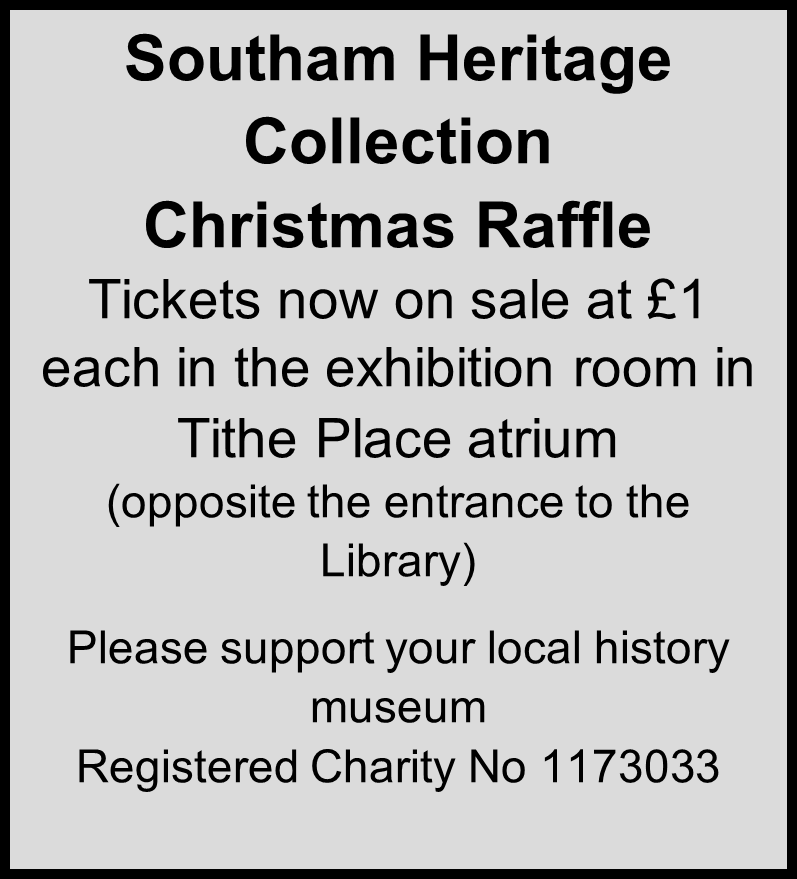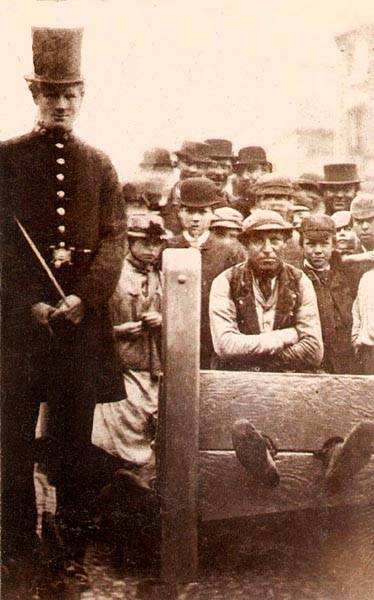In Southam, the role of the local constable is evident from the seventeenth century, as responsibility for local administration moved from the Lord of the Manor towards the parish itself. The parish constable was appointed by magistrates to deal with ‘…rogues, vagabonds and sturdy beggars…’, as they were described in an Act of Parliament of 1662.
The Warwick magistrates’ quarter session of 1667 recorded this example of the Law in practice:
‘…Stephen Burnett, now prisoner in his majesty’s zeal stands convicted for felony and petty larceny…to be stripped naked from the waist upwards and well-whipped about the town of Warwick and on market day next coming…And the constable of Southam do cause the said Burnett to be stripped as aforesaid and whipped about the town of Southam…’
The sentence sets out clearly the responsibilities of Southam’s constable: seeking and apprehending the felon; transferring him to Warwick Assizes; transporting him back to Southam after his initial punishment and finally, carrying out the Court’s punishment of a second whipping.
By the seventeenth century, governments increasingly gave parishes greater powers in policing crime, and constables would be elected by the local Justices of the Peace for one year. They were generally unpaid, although in Southam the churchwardens allowed a salary of £11 per annum (presumably to cover expenses).
After 1707, the constable was supported by official assistants called ‘headboroughs’ or ‘thirdboroughs’. In that year Constable Robert Cox was aided by John Quinney and Stephen Rainbow. Such help would be needed on ‘Mop’ or ‘Fair’ days, and to guard prisoners in the stocks on the days after. It was also expected that every man in the parish should assist the constable. Effectively, the system continued the mediaeval manorial method of the parish policing itself.
Records in Southam give countless details of the daily work of the constable, although he was only recorded by name after 1704 when William Daniel was elected. Therefore we do not know the names of the officers involved in the following cases:
- ‘Trinity 1668…Mary Hyham indicted for stealing a smock of the value of 10d of the goods of Ephraim Benson…confessed and flogged.’
- ‘Trinity 1682…Oliver Basse of Southam, glazier, indicted for stealing and taking away one cock and two hens, value of 9d…confessed and flogged.’
In 1723 Constable John Aldridge recorded a more serious incident, and the costs paid to townspeople who helped him:
‘Pd [Paid] in charges of apprehending and watching a vagrant and pd in charges of apprehending and watching 3 vagrants and lodging them and locking them up after they ran away…5s 2d
Pd R.Eales and William Sherwood and Sam Spicer as found them…8s
Pd for assistance in taking them up and watching them 2 nights and pd Robert Kimberley, William Sherwood and John Hancock attending them…16s 2d.
Pd five men that attended them to Rugby…14s
Pd for beer for the men and 2 nights…16s.’
The records show that until 1829, when Sir Robert Peel created the national Police force, the constable worked alone under his own initiative, but with local support, dealing with similar offences to those of today. The main difference related to the punishments he was expected to carry out, such as whipping, or confining offenders in the stocks.
Southam Heritage Collection is located in the atrium of Tithe Place opposite the Library entrance. We are open on Tuesday, Thursday, Friday and Saturday mornings from 10am to 12 noon. To find out more about Southam’s history, visit our website www.southamheritage.org telephone 01926 613503 or email southamheritage@hotmail.com You can also follow us on Facebook.




Leave A Comment